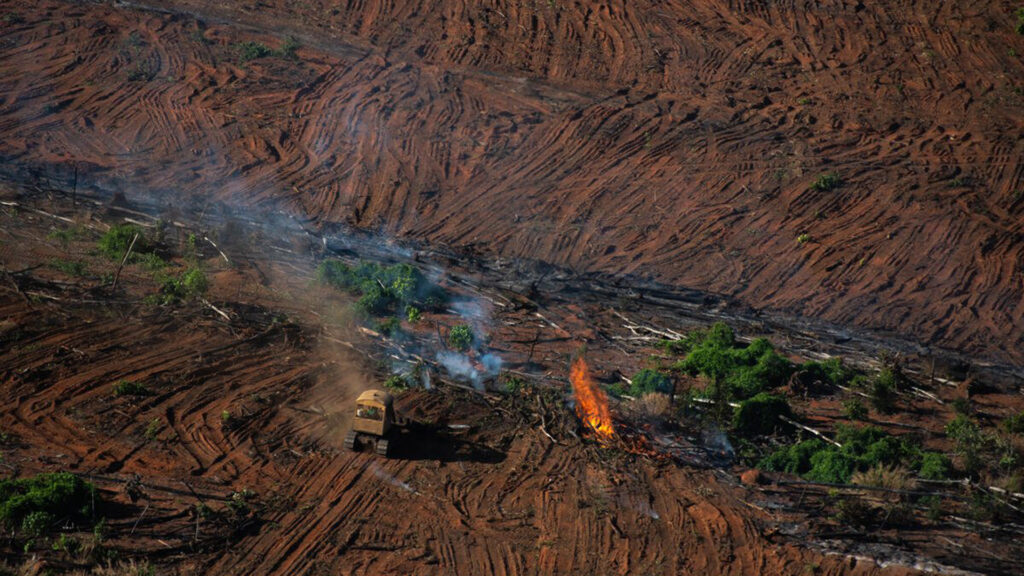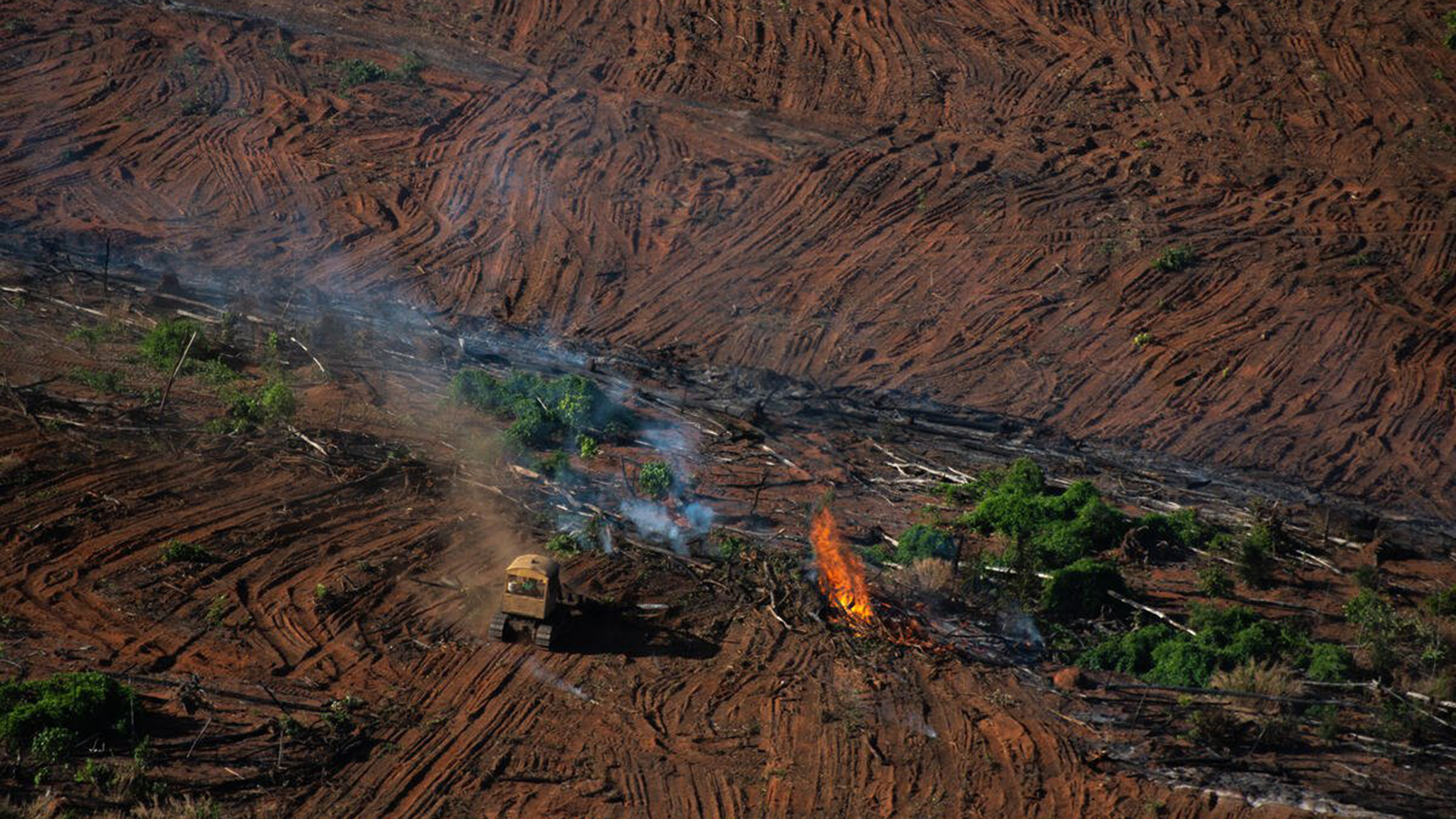How deforestation is pushing the Amazon to a climate tipping point
by Chris Greenberg – Greenpeace UK

When the Amazon rainforest is in danger, we all are.
The world’s largest intact forest, the Amazon plays a key role in regulating the global climate. It is home to Indigenous Peoples and traditional communities whose land stewardship practices can lead us all toward a more sustainable future. It is perhaps the world’s most biodiverse region yet also a place where there are likely still many species unknown to science.
The Amazon is, simply put, amazing. And, yet, it is being destroyed.
Tree by tree, kilometer by kilometer, the Amazon is being weakened by deforestation carried out by those who put short-term profits over people, over the planet, and even over our collective future. From January through July 2022, the highest rate of deforestation ever for the first months of the year was recorded, according to data from INPE, with an area of forest five times the size of New York City deforested in the Amazon during that span.
Life as we know it can not exist without strong standing forests.
Understanding the problems facing the Amazon — notably deforestation and fires fueled by the anti-environment policies of Brazilian president Jair Bolsonaro’s government — can empower us to see the solutions.
Let’s start with the basics facts about the Amazon rainforest, deforestation, and the fires in the region.
Forest remainders burning in September 2020 in an area registered by the Prodes (Brazilian Amazon Satellite Monitoring Project), in Juara, Mato Grosso state. © Christian Braga / Greenpeace
Where is the Amazon rainforest?
The world’s largest intact forest, the Amazon rainforest covers 2.6 million square miles across nine countries in South America: Brazil, Bolivia, Peru, Colombia, Ecuador, Venezuela, Guyana, Suriname, and French Guiana. Approximately 60 percent of the Amazon Basin is in Brazil, where Greenpeace Brazil has been working for 30 years to protect it.
What causes fires in the Amazon rainforest?
Around the world, we have watched in horror over the last few years as images of smoke and fire have emerged from the under-threat forest in Brazil, but it is important to remember that fires in the Amazon are generally NOT a naturally occurring phenomenon.
Healthy, moist rainforests normally do not burn without intervention from humans.
The fires in the Amazon are often started intentionally by people — many of whom are illegal land grabbers emboldened by the anti-environment policies of Bolsonaro’s government — who are attempting to clear forested land for other uses.
This process of destroying trees to clear forested land is known as deforestation.
As it is often done intentionally, the burning in the Amazon is different from the wildfires experienced in places like California or the Mediterranean that can be naturally occurring or ignited by accident.
Wait, fires are started intentionally as part of deforestation?
Yes. In the Amazon, fire is used in the deforestation process to clear the land of vegetation, often after large trees have previously been cut down and left to dry out. The burning season generally starts peaking in July each year to coincide with the natural dry season which extends through November. However, with intentionally diminished enforcement of environmental laws under Bolsonaro as well as increasingly dry conditions due to the climate crisis, there are fires in the Amazon all year round now.
While Indigenous Peoples and traditional communities have understood responsible uses of fire in land stewardship for generations, the fires generating global headlines in the Amazon are often ignited by those people who do not care about the long-term health of the ecosystem or the communities who live there.
These people putting short-term profits over the forest — as well as the global climate — include land grabbers and speculators, illegal loggers and miners, and those looking to seize public forests for private uses such as creating cattle pasture. Such enemies of the environment have been able to operate recklessly and with diminished fear of law enforcement since Bolsanaro became president of Brazil at the start of 2019.
In August 2019, there was a massive coordinated wave of simultaneous fires started in the Amazon in the state of Pará as part of the infamous “Day of Fire.” The cattle ranchers associated with these illegal burnings were inspired in part by Bolsonaro who has made clear he supports a destructive economic development model.

